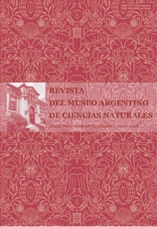Frecuencia y distribución temporal de moscas cadavéricas (Diptera) en la ciudad de Buenos Aires
Resumen
Frequency and temporal distribution of cadaveric flies (Diptera) in the city of Buenos Aires. Forensic entomology is used to estimate the post-mortem interval (PMI) by determination of the species of insects found on a corpse and their stage of development. The later varies according to environtmental conditions; in temperate climates the occurrence of each species varies seasonally. The Order Diptera is the most important in the early stages of decomposition. Only fragmentary data on temporal distibution in Buenos Aires have been published, and these were only based on trapping and rearing. This paper is based on records of forensic ntomology expertises performed in the year period 1995-2005. The occurrences of Calliphora vicina,
e
Phaenicia sericata, Cochliomyia macellaria and Chrysomya albiceps (Calliphoridae), Sarcophaga spp (Sarcophagidae), Hydrotaea argentina and Muscina stabulans (Muscidae) and Megaselia scalaris (Phoridae), indoors and outdoors, is recorded. The predominance of C. vicina from autumn to spring and of P. sericata in summer is confirmed. The autochthonous C. macellaria was recorded the whole year, with a peak in the summer months; it proved rare outdoors. A species which may function as primary or secondary is C. albiceps; it is active in summer and early autumn. The species of Sarcophaga are active mainly in summer but they appear along the rest f the year associated with advanced decomposition. No marked seasonal variation was shown by H. argentina, M. stabulans, and M. scalaris.
e
Phaenicia sericata, Cochliomyia macellaria and Chrysomya albiceps (Calliphoridae), Sarcophaga spp (Sarcophagidae), Hydrotaea argentina and Muscina stabulans (Muscidae) and Megaselia scalaris (Phoridae), indoors and outdoors, is recorded. The predominance of C. vicina from autumn to spring and of P. sericata in summer is confirmed. The autochthonous C. macellaria was recorded the whole year, with a peak in the summer months; it proved rare outdoors. A species which may function as primary or secondary is C. albiceps; it is active in summer and early autumn. The species of Sarcophaga are active mainly in summer but they appear along the rest f the year associated with advanced decomposition. No marked seasonal variation was shown by H. argentina, M. stabulans, and M. scalaris.
Texto completo:
PDFEnlaces refback
- No hay ningún enlace refback.

This work is licensed under a Creative Commons Attribution 3.0 License.

